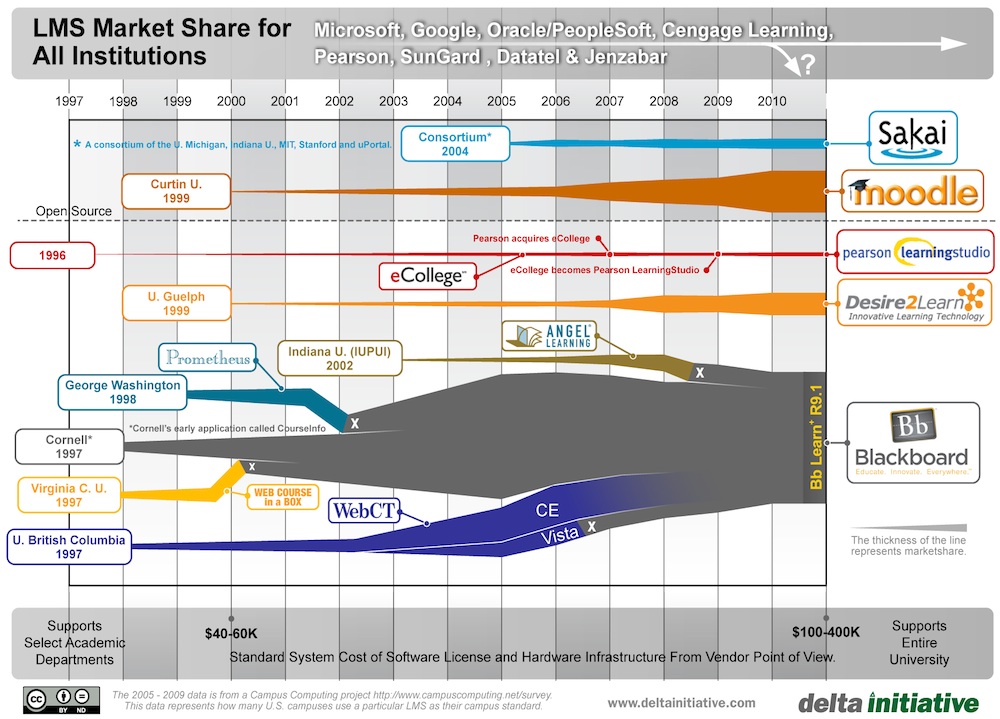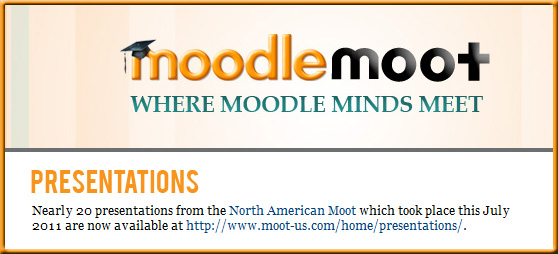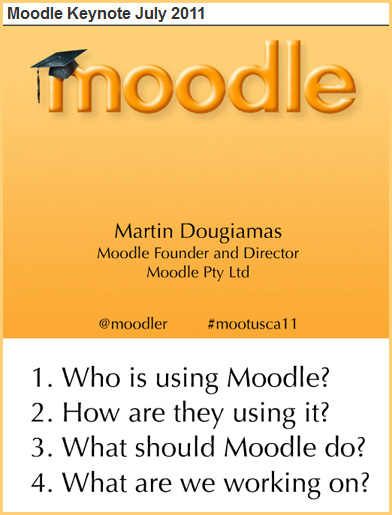Quo vadis, LMS? Trends, predictions, commentary — from CampusTechnology.com
The LMS market is in flux. According to a 2010 survey conducted by the Campus Computing Project, Blackboard‘s dominance of the higher education market declined from 71 percent in 2006 to 57 percent in 2010. Open source alternatives Moodle and Sakai have continued to make inroads, as has Desire2Learn–together they now control over 30 percent of the market. The entry of Instructure, whose Canvas LMS recently scooped up the business of the Utah Education Network, provides an additional plot twist. And hanging over it all is the imminent migration of hundreds of legacy Blackboard clients to new systems as their existing platforms are retired.
Often overlooked in the numbers game, though, are more fundamental–even philosophical–questions about the evolving role of the LMS and its ability to meet the needs of higher education today. If the debate of recent years has been between open source and proprietary systems, the focus is gradually shifting to how all of these systems will tackle the thorny issues of informal learning, social networking, assessment, and a mobile learning environment.
To gauge what the future may hold, CT asked leading educators and vendors for their thoughts on the evolution of the LMS in higher education.















